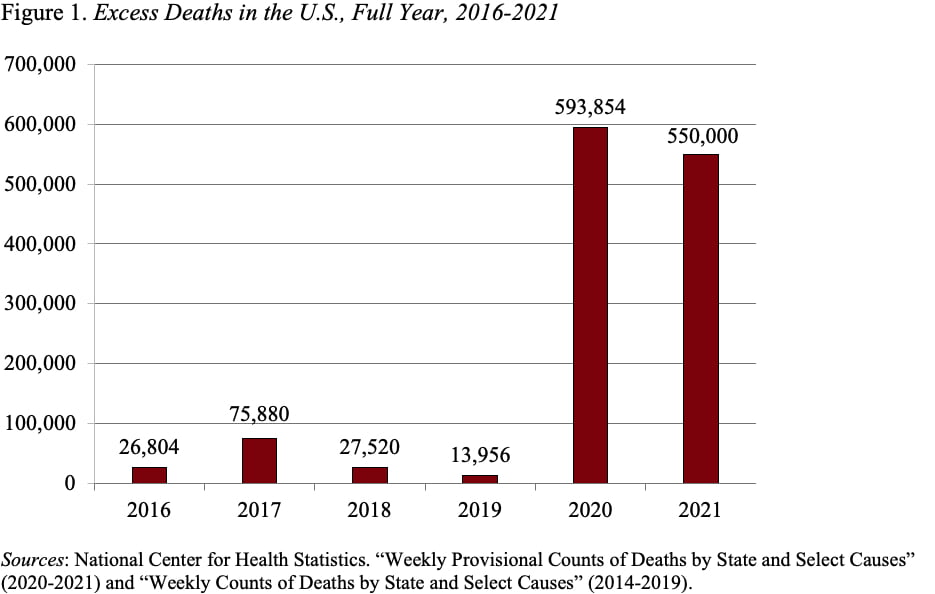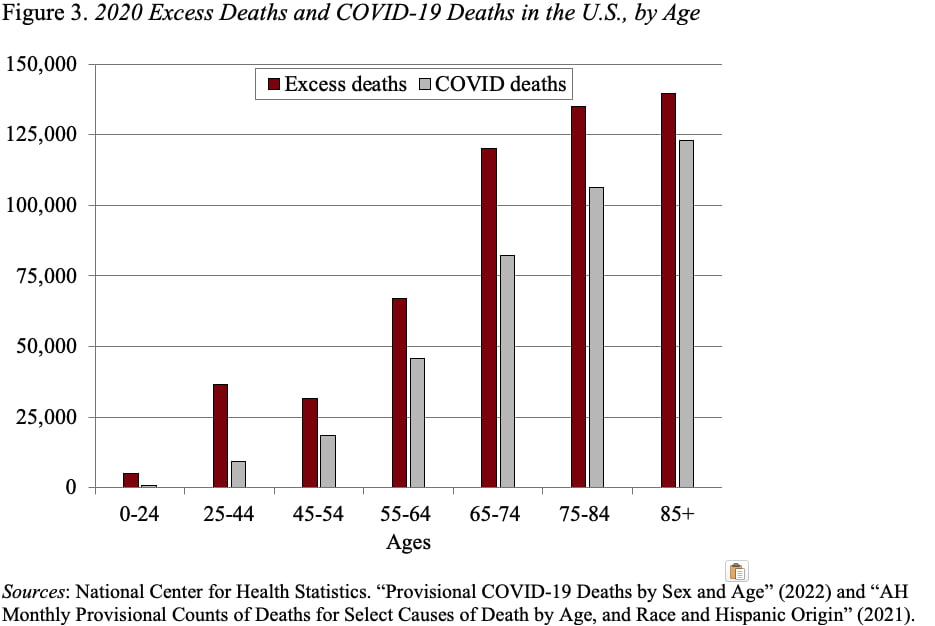
Have We Undercounted or Overcounted COVID-19 Deaths?
Alicia H. Munnell is a columnist for MarketWatch and senior advisor of the Center for Retirement Research at Boston College.
The increase in deaths in 2020 and 2021 far exceeds deaths attributed to COVID.
One of my favorite conspiracy theorists suggested that the government was exaggerating the number of deaths due to COVID-19. According to the National Center for Health Statistics, COVID deaths for 2020 and 2021 totaled 842,000, and with Omicron the total has continued to climb in 2022. Indeed, at a news conference early in the pandemic, Deborah Birx, MD – the response coordinator for the Trump White House coronavirus task force – indicated that the United States was more likely to attribute a death to COVID than other countries. In some countries, if the virus forced an individual with a pre-existing heart or kidney problem to go to the ICU, his death would be recorded as due to a heart issue or a kidney issue. But in the United States, that death would be recorded as a COVID death.
One might think that such an approach, by ignoring the pre-existing conditions, would skew the count of COVID deaths to the high side, as my conspiracy theorist suggested. On the other hand, early stories in the New York Times and Washington Post concluded that deaths were undercounted due to lack of testing and inconsistent protocols.
A simple approach to addressing this question of whether the number of COVID deaths are under- or overstated is to look at the total number of “excess” deaths in 2020 and 2021, where excess deaths are simply the change in deaths over the previous year. The exception is our estimate for 2021; since deaths increased dramatically in 2020 due to COVID, 2021 excess deaths are calculated using 2019 as the comparison year. To get a sense of normal fluctuations in deaths, Figure 1 shows excess deaths for the years 2016-2021. Clearly something unusual happened in 2020 and 2021.

How do the excess deaths and COVID deaths compare? One would expect excess deaths to exceed COVID deaths, because some increase in deaths occur each year even without a pandemic. For the non-pandemic years 2016-2019, excess deaths averaged 36,000 per year. But, as shown in Figure 2, excess deaths exceeded COVID deaths by much more than 36,000 during the pandemic – 201,000 in 2020 and 101,000 in 2021. These could be either undercounted COVID cases or deaths resulting from overwhelmed hospitals and medical personnel, but the 201,000 for 2020 seems particularly puzzling to me.

To try to understand the enormous gap between excess and COVID deaths in 2020, Figure 3 presents the information by age group. The discrepancy is relatively modest for all but two groups – those 65-74 and those 25-44. Not clear what to make of that pattern!

The bottom line, however, is that, if anything, reported COVID deaths appear to have understated – not overstated – the impact of the pandemic.







